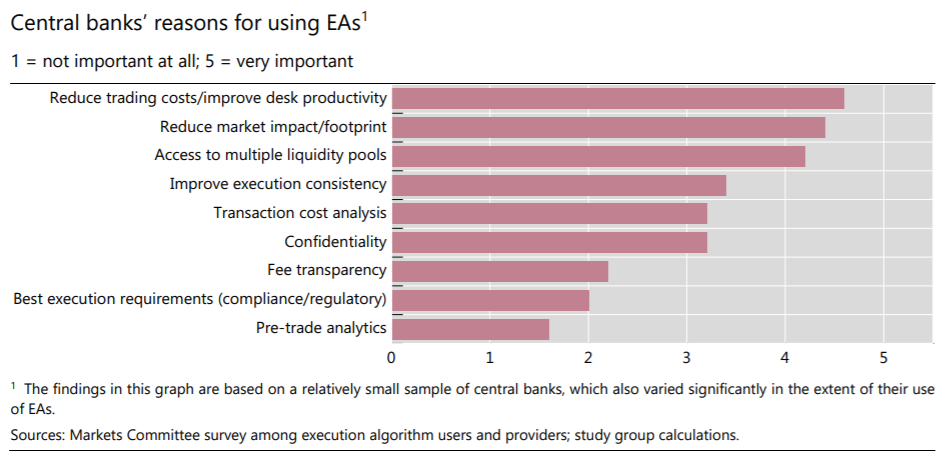Execution algorithms (EAs) – designed to buy or sell foreign exchange according to a set of user instructions – have contributed positively to FX market functioning, the BIS wrote in a recent report. However, as EAs change the way market participants access the FX market and how trades are executed, they also give rise to new challenges.
Central banks and market participants must have access to the necessary data, skills and tools to allow them to assess the opportunities and risks of evolving markets. Execution algorithms — designed to buy or sell a predefined amount of foreign exchange according to a set of user instructions — have seen a rise in usage amid an increasingly decentralized and fragmented trading environment. This has helped support price discovery and market functioning but also has the potential to create new risks.
The report examines the drivers and implications of the increase in EA usage in FX markets. It draws on a unique survey of 70 sophisticated market participants globally and extensive industry-wide outreach, and provides distinctive perspectives on the use of EAs, including by central banks.

Among the 15 central banks that were surveyed, five central banks reported using EAs, with the extent of usage varying
widely. One central bank indicated that it used EAs for almost 90% of overall volumes, two used EAs for about 25–30%
of overall volumes, and the other two central banks used EAs for less than 10% of their overall FX volumes. Central
banks’ use of EAs for FX trading was concentrated in developed market currencies. More than half of them used timesliced algorithms for more than 70% of their transaction volume. Most central banks indicated that they have three or
more FX EA providers.
Prepared by a study group led by Andréa Maechler, member of the Governing Board of the Swiss National Bank, it concludes that while EAs improve market functioning, they also create new challenges. In particular, they transfer execution risk from dealers to end users; contribute to changing liquidity dynamics and the underlying market structure; and raise the bar for market participants in accessing the data, skills and tools required to navigate this market successfully.
“The report provides an insightful stocktake of the growing use of FX execution algorithms by a broad range of participants in FX markets, and highlights both the benefits and the potential risks of such execution algorithms. This will help market participants gain a deeper understanding of such elements, which are becoming increasingly important in FX markets,” said Jacqueline Loh, deputy managing director at the Monetary Authority of Singapore and chair of the Markets Committee, in a statement.

